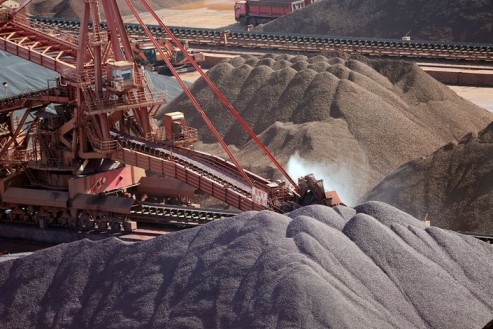India–US Trade Tensions Rise Over Steel and Auto Tariffs NMDC Limited reports a 38% drop in Q4 FY24 consolidated net profit RINL to Raise $23 Million Through Land Sales Amid Crisis

China's demand for imported iron ore has most likely peaked, but the composition of future imports are likely to shift as the world's biggest steel producer seeks to decarbonise.
China, which buys about 75% of all seaborne iron ore, imported 1.18 billion metric tonnes of the key steel raw material in 2023, a record high, according to customs data. But since 2019, iron ore imports have been locked in a fairly narrow range between 1.07 billion and the 2023 peak.
The consensus of views at last week's Iron Ore Forum in Singapore, which brought together miners, traders and steel producers, was that China's demand will remain relatively flat around current levels.
This view is based on two large caveats, namely that Beijing continues with its informal policy of capping annual steel production around 1 billion tonnes, and that China's domestic iron ore output remains steady on a contained iron basis, with any increase in mined volumes being offset by declining grades.
Assuming those two conditions are indeed maintained, it's hard to make a case that China's demand for imported iron ore will do anything other than stagnate, albeit at a very high level.
The question then becomes how will the market dynamics shift, as for the last two decades iron ore has been driven largely by the relentless growth of China, which saw imports surge six-fold between 2004 and 2024.
The first thing to note is that while China will remain the biggest buyer of seaborne iron ore, its dominance will slip somewhat as other steel producers emerge in Asia, especially in India and Southeast Asia.
India is the fifth-biggest iron ore exporter, but as its domestic industry expands it is likely to export less, and may even turn to being a net importer in the 2030s.
Countries such as Vietnam and Thailand are also expected to boost steel production over the coming decade, and will largely rely on imported iron ore. However, the demand drivers for iron ore are weakening, making it more likely that supply will be the key price determinant over the coming decade.
Also Read : NMDC raises iron ore prices State wildlife panel rejects iron ore mining in Tadoba-Karhandla corridor